Achieving significant wealth growth through cryptocurrency speculation in the short term is indeed very attractive, but considering it as the only or primary way for ordinary people to change their destiny and encouraging others to blindly try is a very one-sided and risky viewpoint. Below is a detailed analysis of this viewpoint:
I. The high risks of cryptocurrency speculation
High market volatility:
The cryptocurrency market is known for its high volatility, with prices capable of significant increases or decreases in a short time. This volatility makes speculation a high-risk investment activity, where investors may face substantial financial losses.
Information asymmetry:
The cryptocurrency market is relatively new, with low transparency, and there are many insider trading and market manipulation behaviors. Ordinary investors often struggle to access accurate market information, making them susceptible to misguidance and deception.
Lack of regulation:
Although regulations on cryptocurrencies have been gradually strengthened in various countries in recent years, there are still overall gaps and loopholes in regulation. This provides opportunities for wrongdoers to defraud investors through scams, pyramid schemes, and other means.
II. The uniqueness of successful cryptocurrency speculation cases
Survivorship bias:
The success story you mentioned, from a large loss to earning 40 million, is indeed inspiring, but it does not represent the common situation of the entire cryptocurrency speculation community. In reality, most speculators may face losses or even total loss of capital. Survivorship bias often leads people to see only successful cases and ignore the risks of failure.
Personal ability and experience:
Successful cryptocurrency speculation often requires deep market analysis ability, risk control ability, and psychological resilience. These abilities are not acquired overnight; they require long-term learning and practical accumulation. For ordinary investors lacking relevant experience and capabilities, blindly trying cryptocurrency speculation is likely to lead to failure.
III. Other ways to change destiny
Traditional investment channels:
In addition to cryptocurrency speculation, there are many other traditional investment channels to choose from, such as stocks, funds, bonds, etc. These investment channels are relatively mature, well-regulated, and the risks are relatively controllable. Through reasonable asset allocation and long-term investment, investors also have the opportunity to achieve wealth appreciation.
Enhancing personal capabilities:
The fundamental way to change one's destiny is to improve personal abilities. By learning new knowledge, mastering new skills, and accumulating work experience, one can enhance competitiveness and income level. This not only allows for wealth accumulation but also improves personal social status and quality of life.
Entrepreneurship and innovation:
Entrepreneurship and innovation are also important ways to change one's destiny. By discovering market opportunities, creating new products or services, and meeting consumer demands, individuals can maximize their value. Although entrepreneurship and innovation are full of challenges and risks, once successful, they often bring significant returns.
IV. Recommendations for ordinary investors
Maintain rationality:
In the face of high-risk investment activities like cryptocurrency speculation, ordinary investors should maintain a rational attitude, avoiding blind following or believing in rumors. Before making investment decisions, fully understand the market situation and risk conditions, and conduct thorough risk assessments.
Diversified investment:
Do not put all funds into a single investment channel like cryptocurrency speculation. Diversify investments to spread risks and reduce overall portfolio volatility. This way, even if one investment channel incurs losses, it will not significantly affect the entire portfolio.
Continuous learning:
The investment market is constantly changing and evolving. Ordinary investors should continuously learn new knowledge, master new skills, and improve their investment capabilities and risk control skills. This can be achieved through training courses, reading professional books, following market dynamics, etc., to continuously enhance their investment level.
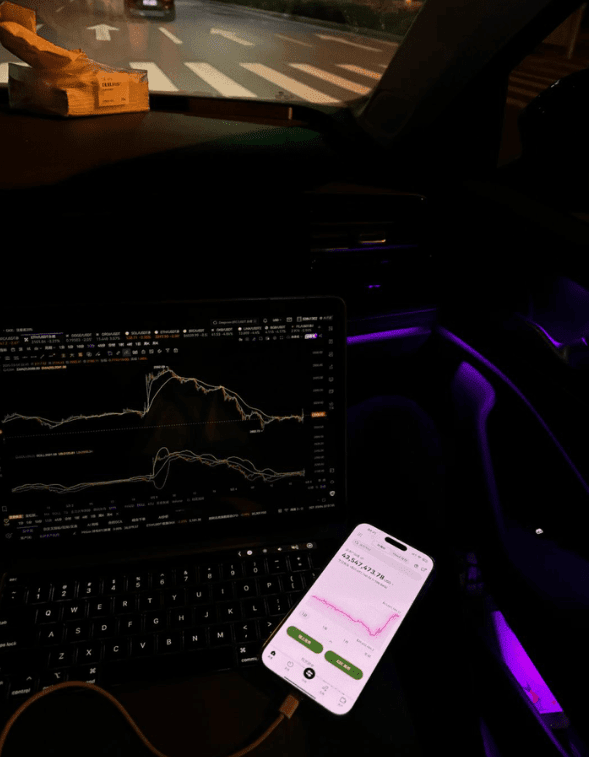
I. About market cycles and position management
Applicability of 'Five poor, six absolute, seven reversals'
This saying originates from traditional stock markets (like Hong Kong stocks), but the cryptocurrency market is more influenced by global liquidity, policies, and technological breakthroughs, making cyclical patterns potentially less pronounced than in stock markets. For example:In 2020, due to pandemic easing, Bitcoin actually surged in May-June;
In 2021, the bull market persisted throughout the year, with no obvious off-season;
In 2022, the bear market was low throughout the year, with weak correlation to months.
Recommendation: If adhering to seasonal strategies, other indicators (such as macro liquidity, on-chain data) should be combined for validation to avoid mechanical execution.
Your strategy logic
From late August to late November: may correspond to the continuation of the traditional financial market's 'golden September, silver October,' combined with year-end performance pushes from institutions;
Before the Spring Festival to April: May capture early-year liquidity easing or project-driven demand.
Risk points: If the market is in a bear phase, these periods may also be low, requiring dynamic adjustments.
II. Core and precautions of the Pinbar strategy
Definition of Pinbar
Pinbar (shadow line candlestick) is a candlestick that returns to the opening price after a sharp price fluctuation, reflecting the direction rejected by the market after a brief test. For example:Long upper shadow: Heavy selling pressure above, possibly bearish;
Long lower shadow: Strong support below, possibly bullish.
Key usage conditions (avoid false signals)
Trend background: More effective in trends (such as the pullback low in an uptrend), easily ineffective in a sideways market;
Volume cooperation: Amplified volume in the shadow part indicates real competition;
Key positions: Signals are stronger when appearing at support/resistance levels, Fibonacci retracement levels, and other strong technical points;
Subsequent confirmation: A single Pinbar needs to be combined with subsequent candlesticks (such as engulfing patterns, gaps) to verify the direction.
Common misconceptions
Over-reliance on a single candlestick: Comprehensive judgment is needed, considering trends, moving averages, volume, etc.;
Ignoring market sentiment: Events like Bitcoin ETF approvals, Federal Reserve interest rate hikes can overshadow technical signals;
Fixed take profit and stop-loss: Should be dynamically adjusted based on volatility (e.g., ATR indicator).
III. Advanced suggestions: How to improve strategy win rate
Multi-timeframe validation
After discovering a Pinbar on the daily chart, switch to the 4-hour chart to confirm the trend direction, avoiding counter-trend operations.
Combine on-chain data
For example: When a long lower shadow Pinbar appears, if the on-chain shows a large address increasing its holdings, it may enhance signal reliability.
Backtesting and optimization
Use historical data to test the win rate and profit-loss ratio of your cyclical strategy + Pinbar combination;
Record failed cases, analyze whether it was a market change or a strategy loophole.
Risk control is a priority
Risk per trade should not exceed 2% of total funds;
Reduce positions in bear markets, but in bull markets, they can be increased appropriately, but strict stop-losses are required.
IV. Rational recognition of 'hundredfold coins'
The rarity of hundredfold coins
90% of projects in the cryptocurrency market ultimately go to zero, and hundredfold coins often come with high risks (such as rug pulls and regulatory crackdowns).Screening logic
Fundamentals: Team background, technical barriers, community activity;
Narrative heat: Does it align with current hot topics (e.g., RWA, AI + blockchain);
Market capitalization management: Is the circulation volume and lock-up mechanism reasonable.
Investment ratio
It is recommended to use no more than 5% of total funds to participate in low market cap cryptocurrencies to avoid heavy bets.
Summary
Your strategy framework already has a prototype but needs to be improved through the following steps:
Historical backtesting: Verify the performance of the cyclical strategy in different market environments;
Refine Pinbar rules: Clarify specific conditions for entry, stop-loss, and take profit;
Incorporate a risk control system: such as dynamic position management, black swan response plans;
Continuous learning: Pay attention to the impact of macro policies and technological innovations on the market.
There is no 'holy grail' in financial markets, but through systematic strategies and strict discipline, you can gradually improve the probability of profit. It is recommended to test in real markets with small capital first, then gradually scale up operations.
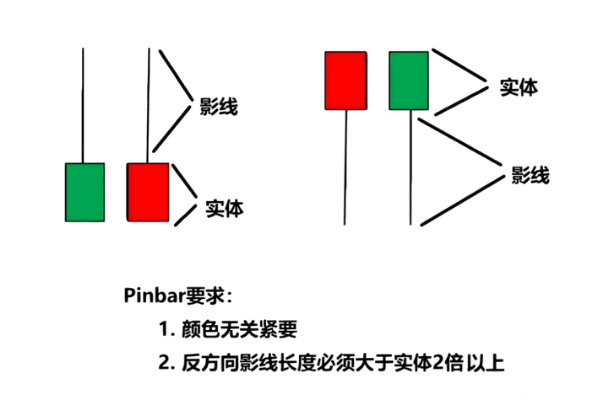
1. Pinbars have no color requirements, and the body cannot be too long;
2. And the length of the opposite shadow must be greater than twice the length of the body; otherwise, it does not constitute an effective Pinbar;
3. Of course, there will also be some deformed candlesticks in real trading that also qualify, as shown in the figure below;
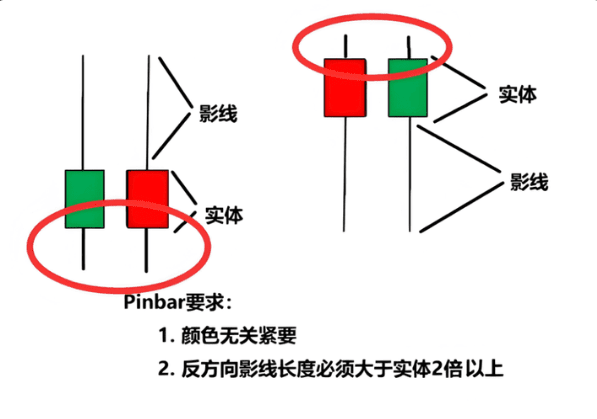
The other end of the candlestick can have shadows, but they must be very short!
Up to here
The first step is completed
For ease of memory, we give the above two candlestick patterns distinct names
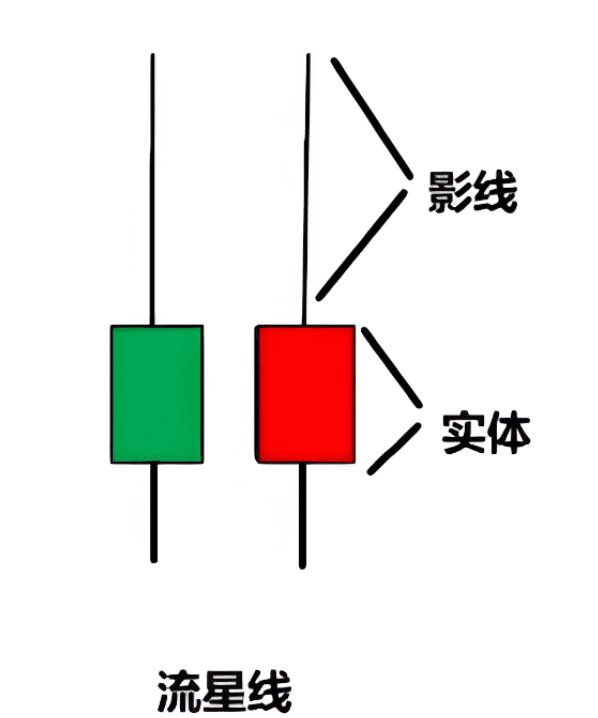
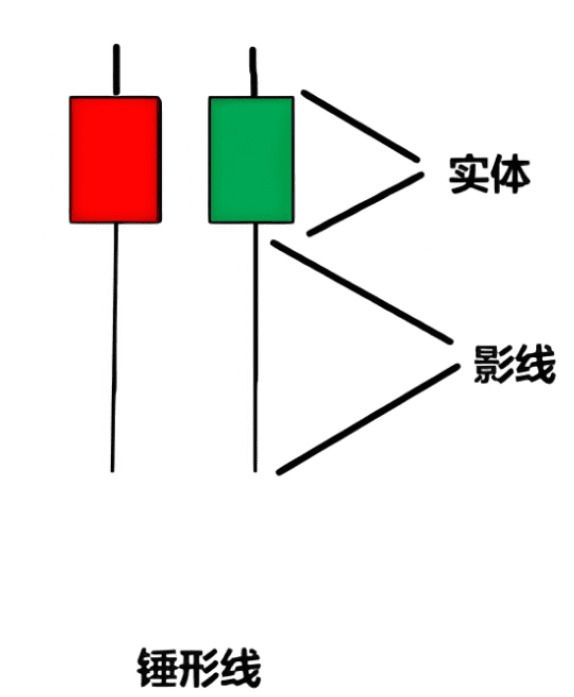
Core trading strategy
Entry condition: Only enter trades when a shooting star or hammer is clearly identified on the candlestick chart; otherwise, remain on the sidelines to improve trading win rates. In the absence of mature techniques, simple and clear trading rules often yield better returns, avoiding losses from overtrading or blind trading.
Beware of false patterns: When looking for Pinbar patterns, shooting stars and hammers are necessary conditions and cannot be forced. If you deliberately look for trades, you will find many seemingly Pinbars, but in reality, 80% are invalid false patterns, which can lead to trading failures.
Pinbar pattern position requirements
Market phase
Shooting star: Must appear at the very top of an uptrend. This indicates that in an uptrend, the bullish forces are gradually exhausted, and the bearish forces begin to exert pressure, potentially signaling a reversal down.
Hammer: Must appear at the very bottom of a downtrend. This means that in a downtrend, the bearish forces are exhausted, and the bullish forces start to fight back, with the potential for a reversal upwards.
Key levels: The Pinbar must be at a certain key level, which is a major support or resistance level. The major support level is the price level at which there may be a rebound after a decline; the major resistance level is where the price may face resistance and retreat during an uptrend. A Pinbar at a key level has a higher reliability for reversal signals.
Method for finding key levels
To accurately determine whether a Pinbar is at a key level, one needs to learn to find key levels, which can be referenced in previous articles, mastering specific methods and techniques, such as analyzing historical price movements, using Fibonacci retracement levels, trend lines, moving averages, etc., to determine key levels.
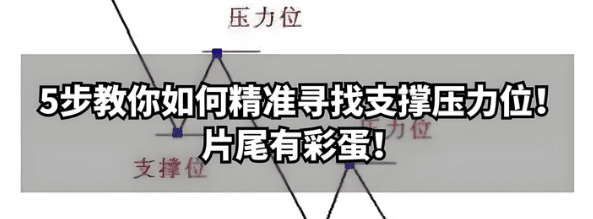
Next, let's learn the first point
The shooting star must be at the very top of an uptrend;
The hammer candlestick must appear at the very bottom of a downtrend.
We will look for a few easy-to-understand examples in real trading:
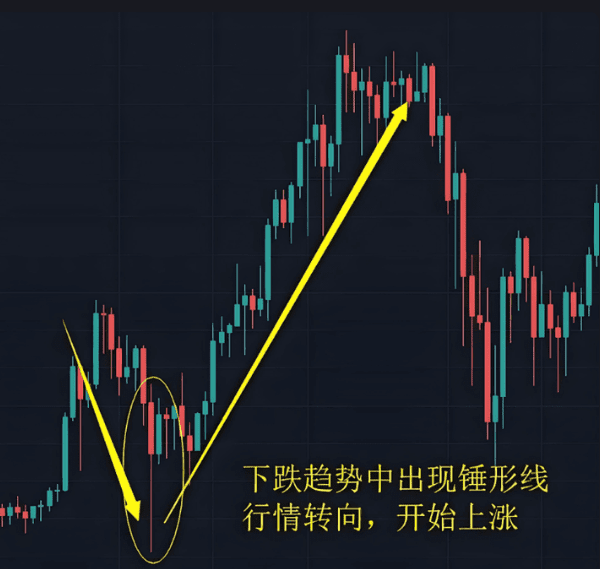
(Figure 2-1 Bitcoin 4-hour chart 2021-01-04 16:00)
This hammer candlestick appears in a small retracement downtrend, and the lowest point of the hammer is also the lowest point of this downward trend. After the subsequent candlesticks, none have broken below the low of the Pinbar, and the market quickly reverses upwards, continually hitting new highs. This Pinbar is considered an effective candlestick.
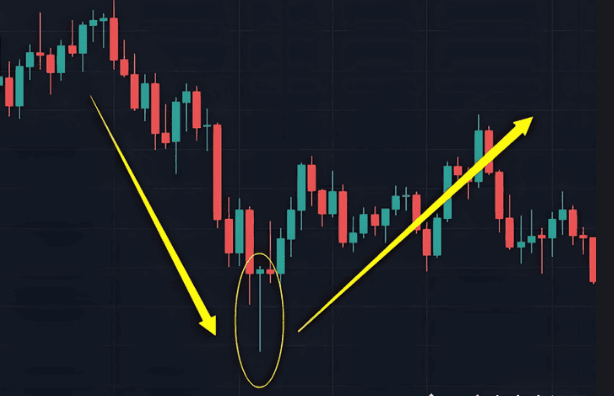
Figure 2-2 Bitcoin 4-hour chart 2021-01-22 08:00)
The position of this hammer candlestick is almost a textbook example
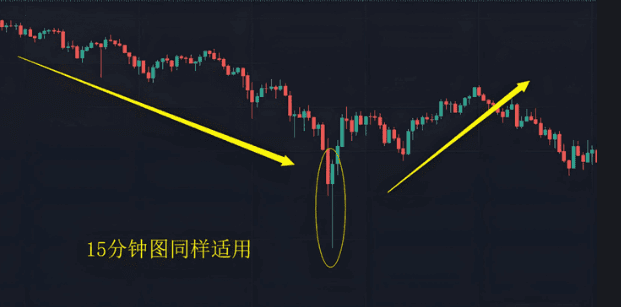
Figure 2-3 Bitcoin 4-hour chart 2021-02-22 22:15)
If you are day trading, frequently checking minute charts, this is also applicable
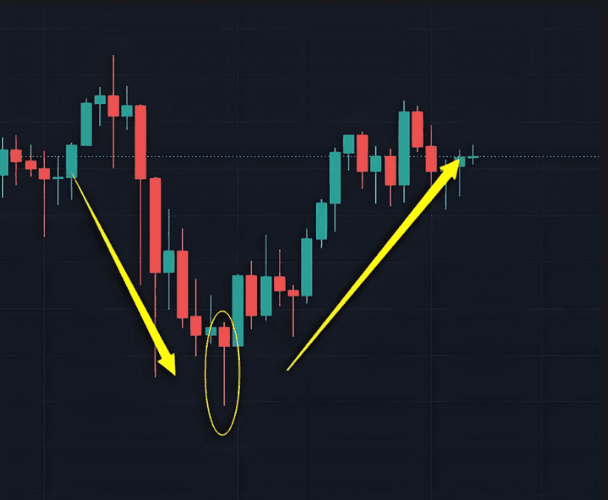
Figure 2-4 Ethereum daily chart 2021-02-28)
Of course, this method is not limited to Bitcoin and is more applicable to other cryptocurrencies, as well as stocks, forex, futures, etc.
Let's continue to find real trading cases of shooting star patterns
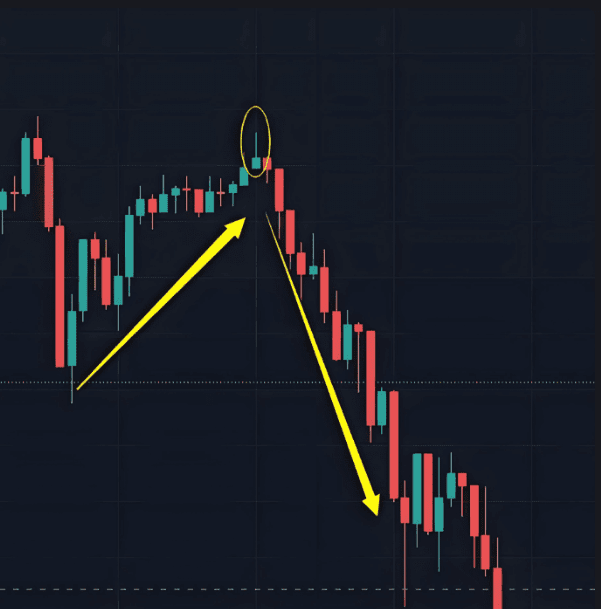
Figure 2-5 Bitcoin 15-minute chart 2021-03-15 12:00)
As shown in the figure above, a shooting star Pinbar appeared in a not particularly sharp upward trend, and the market quickly began to reverse, plunging rapidly.
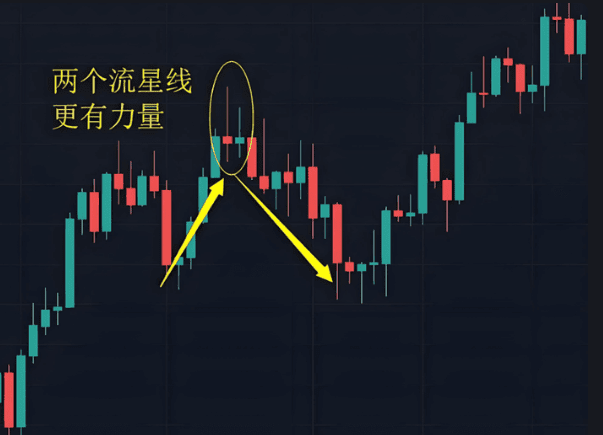
(Figure 2-6 Ethereum 4-hour chart 2021-03-03 20:00)
3, Formulate trading strategy
Having learned how to find Pinbars, the next step is to learn how to enter trades and make money! Those who can buy are apprentices; those who can sell are masters.
A complete trading system includes targets, positions, directions, entry points, stop-loss points, take-profit points, countermeasures, and follow-ups...
Let's discuss them one by one
Target, position, direction, I don't need to say more
Focus on how to quickly seize entry opportunities when we identify an effective Pinbar pattern
There are generally two types
Breakout entry, stop-loss on reverse break signal, stop-loss if retracement exceeds 50%, and take profit placed at equal distance from the Pinbar or use trailing stop.
Entry signal at 50% retracement, stop-loss on reverse break signal, take profit placed at an equal distance from the Pinbar or use a trailing stop.
Examples:
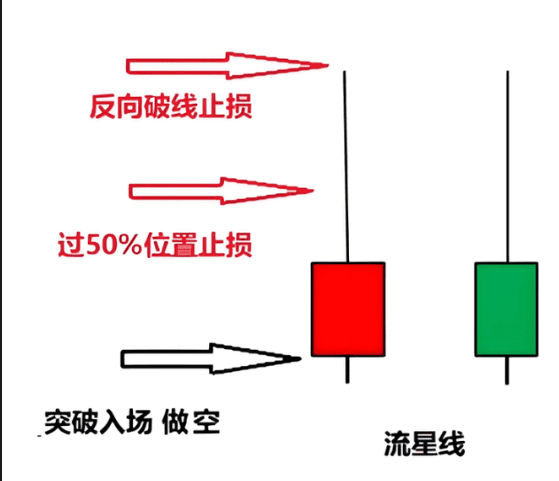
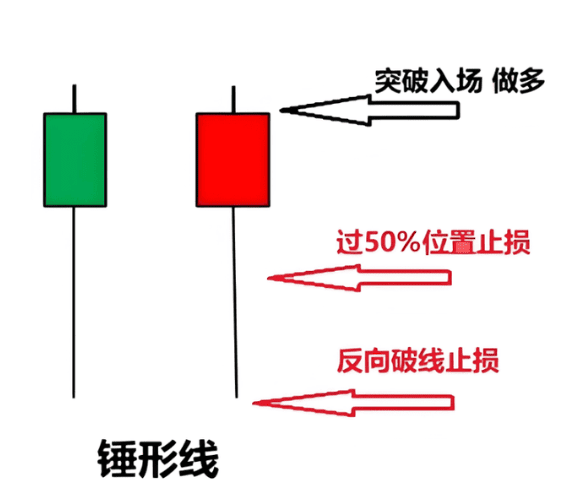
. We can verify this one by one in the real trading mentioned in the first part
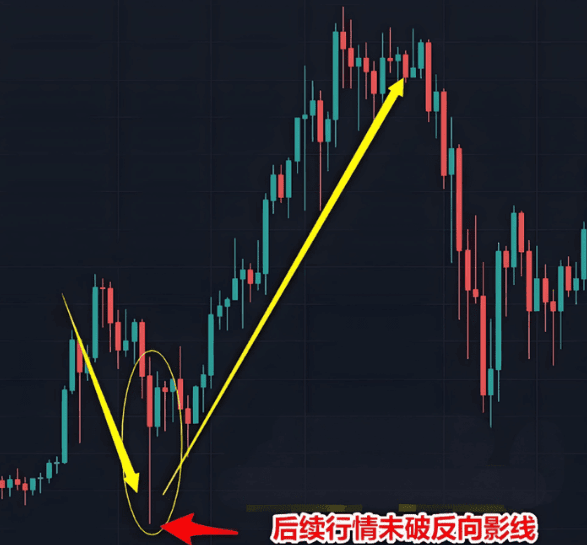
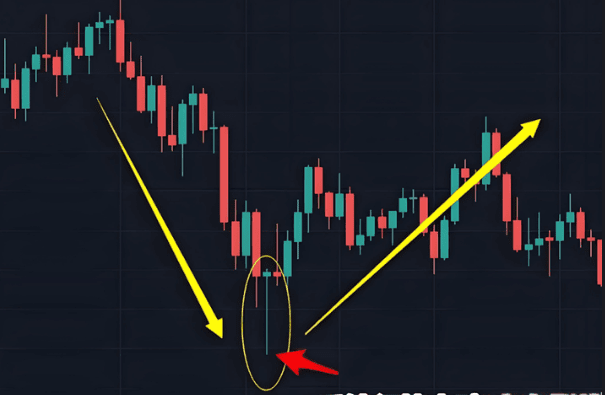
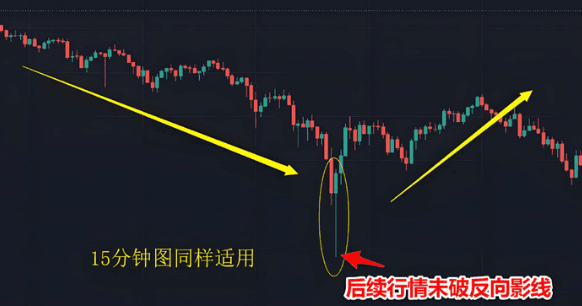
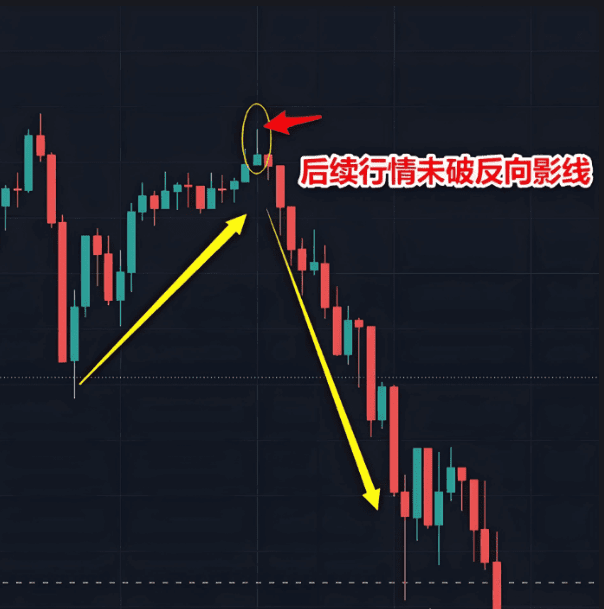
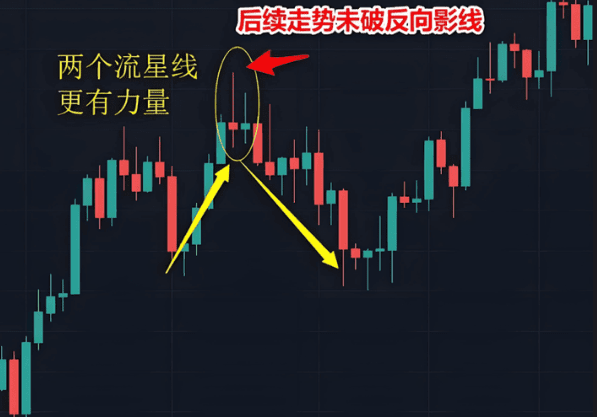
Regarding the take profit rule of 'at least capturing the amplitude of a single Pinbar candlestick', this can be understood in conjunction with trading logic and practical scenarios:
I. Core concept: What is the amplitude of a Pinbar?
The amplitude of the Pinbar (shadow line candlestick) = highest price - lowest price (i.e., the price fluctuation range of a single candlestick).
For example: If a certain Pinbar has a highest price of 2100 and a lowest price of 1900, then the amplitude is 200 points (2100-1900).
II. Practical significance of the take profit rule
"At least capture the amplitude point" requires that your take profit target covers the full range of fluctuation of this Pinbar.
Purpose: Ensure you capture the market's probing actions towards key price levels (such as support/resistance) and avoid missing subsequent trends due to premature profit-taking.
Logic: The formation of a Pinbar is often accompanied by fierce competition between bulls and bears, and its amplitude represents extreme market sentiment fluctuations. Capturing this portion of points confirms the preliminary effectiveness of the trend.
III. Specific operational steps
Identify Pinbar: Find a single candlestick with a significant long shadow (upper or lower shadow), with the shadow length at least twice the length of the body.
Calculate amplitude: Subtract the lowest price from the highest price to obtain the amplitude value (e.g., 200 points).
Set take profit:
Bullish Pinbar (long lower shadow): Take profit price = lowest price + amplitude (e.g., 1900 + 200 = 2100).
Bearish Pinbar (long upper shadow): Take profit price = highest price - amplitude (e.g., 2100 - 200 = 1900).
Dynamic adjustment: If the market trend is strong, consider moving the take profit up appropriately with other signals (like breaking key levels), but the initial target should at least cover the amplitude.
IV. Combining with profit-loss ratio
A profit-loss ratio of 1:1.5 is the bottom line, while 'capturing the amplitude' serves as a specific reference point for take profit.
Example:
Entry price 2000, stop-loss 1900 (loss of 100 points), with a profit-loss ratio of 1:1.5, take profit must be at least 2150 (100×1.5).
If the Pinbar's amplitude is 200 points, then take profit can be set to 2100 (lowest price 1900 + 200).
Final choice: Take the more conservative target of the two (i.e., 2100) to ensure the profit-loss ratio is met (2100-2000=100 points profit, 100/100=1:1; although it doesn’t reach 1.5, it should be adjusted based on trend strength; if the trend is weak, consider abandoning the trade; if the trend is strong, consider raising the take profit to 2150+).
V. Why is it suitable for beginners?
No complex analysis required: just identify the Pinbar pattern and calculate the amplitude, avoiding interference from various technical indicators.
Reduce trading frequency: Pinbars are rare, occurring 1-2 times a week, reducing losses caused by frequent trading.
Risk is controllable: strict stop-loss + profit-loss ratio, even with a win rate of only 40%, can still be profitable, suitable for beginners to establish trading discipline.
VI. Precautions
Trend alignment: Pinbars should appear at key price levels (such as support/resistance, near moving averages), with counter-trend Pinbars having low success rates.
False breakout risk: If the price reverses without hitting the take profit, strict stop-loss must be executed to avoid wishful thinking.
Multi-timeframe verification: Confirm trend direction on higher timeframes (like the 4-hour chart) to improve signal reliability.
Summary: The essence of this rule is 'let profits run, cut losses short.' By capturing the amplitude of the Pinbar, you confirm the preliminary effectiveness of the trend and provide assurance for the profit-loss ratio. Combined with strict stop-loss and a win-rate advantage, even as a beginner, you can gradually build a stable trading system.
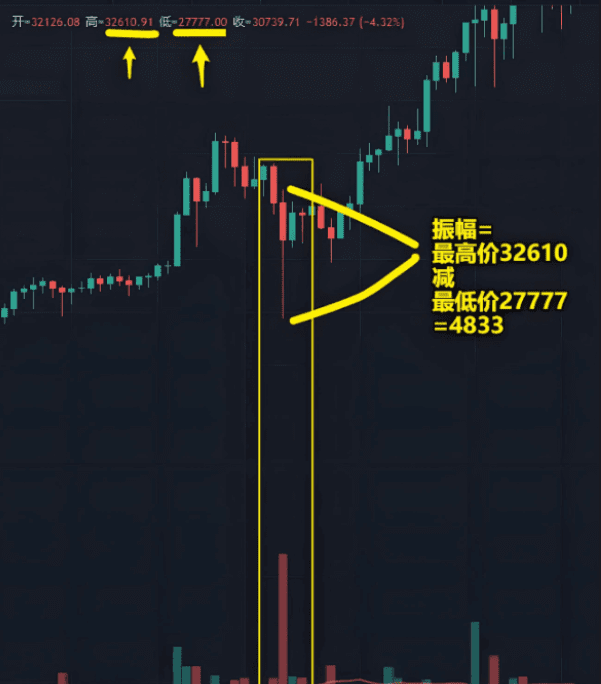
As shown in the figure above
By calculation, the amplitude of a single candlestick = highest price - lowest price.
The amplitude of this Pinbar is 4833 points, so you must at least capture 4833 points upwards here.
But the real situation in this case was that it rose nearly 10,000 points. #Chinese investors flock to Indonesia
These two take profit methods are relatively common, and the market is likely to reach those points.
Another scenario is that the market sometimes surprises you. You might only want to capture 2000 points, but the market gives you 5000 points, yet you have already taken profit and feel regret. For such situations, you can learn a more advanced take profit method: the three-line take profit method! (trailing stop)
I'm worried that too much practical information might hinder digestion; after all, reviewing takes time. We won't cover the three-line take profit method today; I will separately write a detailed article on it later, hoping you can follow this public account to be notified in time. #BitDigital transformation
Of course, there is no holy grail in trading markets; the Pinbar strategy I discussed today may also fail, so entering carries risks, and trading should be cautious!
But I think it's enough for beginners, and strict stop-losses must be adhered to. #New Chinese regulations on crypto
If you are also a tech enthusiast, take a look at the following chart:

This blockchain contract trading strategy framework is clear, combining technical analysis, risk control, and trading discipline, and indeed has the potential for steady profits. Below are optimization suggestions and key supplements to further enhance practicality and risk resistance:
I. Strengthening the core advantages of the strategy
Mainstream coin selection logic
Supplementary data support: BTC and ETH account for over 60% of the total cryptocurrency market capitalization, with liquidity more than 10 times that of altcoins, leading to smaller declines in extreme markets, making them suitable for high-frequency trading.
Correlation hedging: Monitor BTC/ETH ratios simultaneously; when the ratio breaks historical fluctuation ranges, it may indicate a shift in strength between the two, aiding trend judgment.
Moving average strategy optimization
Multi-cycle validation: In addition to MA60, add EMA9 (short-term trend) and EMA200 (long-term trend) for cross-validation. For example:
Short: Price breaks below EMA9 and MA60 downward, while EMA9<EMA200.
Long: Price breaks above EMA9 and MA60 upward, while EMA9 > EMA200.
Dynamic resistance levels: Combine Fibonacci retracement levels (such as 38.2%, 61.8%) with previous highs/lows to form a resistance-support grid, improving entry accuracy.
II. Upgrading risk control
Refinement of stop-loss strategy
Volatility adjustment: Dynamically set stop-loss based on ATR (average true range). For example:
Short stop-loss = resistance level + 1.5×ATR (to avoid being stopped out by short-term fluctuations).
Long stop-loss = support level - 1.5×ATR.
Time stop-loss: If the price hovers around a key level for more than 4 hours without breaking through, actively close the position to avoid consumption.
Strengthening capital management
Kelly formula application: Calculate the optimal position based on historical win rate (e.g., 60%) and profit-loss ratio (3:1):
f∗=bbp−q=33×0.6−0.4≈46.7%
(Actual recommended position ≤ 20%, retaining a safety margin)
Batch building positions example:
Short: Build positions in three batches at resistance levels (2440, 2450, 2460), with each batch accounting for 33% of the position.
Long: Build positions in two batches at support levels (2320, 2300), with each batch accounting for 50%.
III. Key points for executing trading discipline
Hot coin trading rules
Screening criteria: Only participating in cryptocurrencies with a market capitalization in the top 20 and a 24-hour trading volume > $500 million to avoid liquidity traps.
Quick in and out: The volatility of hot coins is 2-3 times that of mainstream coins, holding time ≤ 12 hours, with profit-taking and stop-loss tightened simultaneously (e.g., profit-loss ratio of 2:1).
Emotion management tool
Trade log: Record the reasons, emotional state, and results of each trade, and periodically review to eliminate cognitive biases.
Mandatory rest mechanism: Pause trading for 1 day after 3 consecutive days of profit to avoid excessive confidence leading to drawdowns.
IV. Extreme market response plan
Black swan event contingency plan
Pre-set stop-loss and take-profit: Set in advance via API or exchange conditional orders to avoid network disconnections or emotional loss of control.
Hedging strategy: When holding long BTC positions, buy ETH put options (or reverse contracts) to hedge systemic risks.
Responding to liquidity exhaustion
Avoid integer thresholds: For example, when BTC is around $30,000 or $40,000, reduce leverage trading to prevent liquidation from spikes.
Switch exchanges: If the current platform lacks depth, quickly switch to leading exchanges like Binance or OKX.
V. Long-term survival laws
Compound growth model
Daily target: Set a profit target of 1%-2%, instead of pursuing large single profits. For example:
$10,000 principal, daily profit of 1% → assets ≈ $97,000 after 1 year (based on 250 trading days).
Drawdown control: Maximum drawdown ≤ 30%, otherwise pause trading and reduce leverage to 1/3.
Market cycle recognition
Bull market strategy: Mainstream coin leverage ≤ 5 times, hot coins ≤ 3 times, mainly trend-following.
Bear market strategy: Focus on short positions, leverage ≤ 3 times, strict stop-loss, avoid bottom fishing.
Sideways market strategy: Buy high and sell low, leverage ≤ 2 times, profit-loss ratio ≥ 2:1.
VI. Implementation checklist (before daily trading)
Have you analyzed the 4-hour and daily trends of BTC/ETH?
Are the key resistance/support levels clear?
Are the stop-loss and take-profit points dynamically adjusted based on ATR?
Is the maximum daily loss ≤ 20%?
Is the current market sentiment (greed index/fear index) extreme?
Are there any open positions in hot coins?
Conclusion: The core of this strategy is "survival as the first principle, achieving compound growth through probabilistic advantage." There is no eternal holy grail in the cryptocurrency circle, but strict discipline and continuous optimization can help you survive in a market where 90% of traders are eliminated. Remember: slow is fast, and stability is winning.#加密市场回调 #加密货币
BTC BTH PEPE

